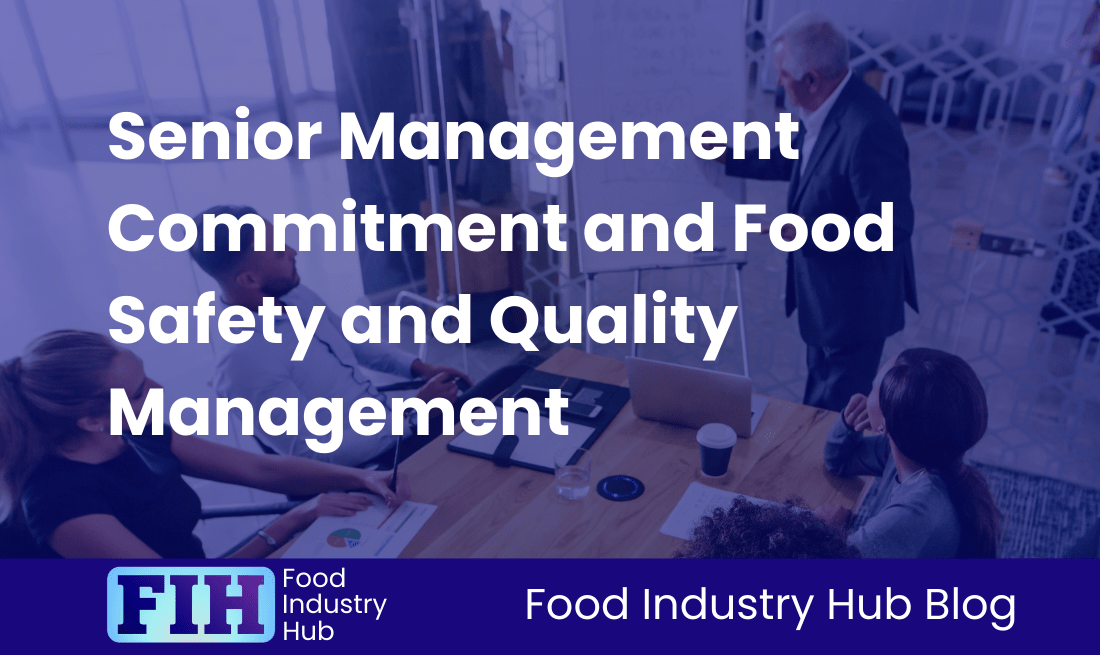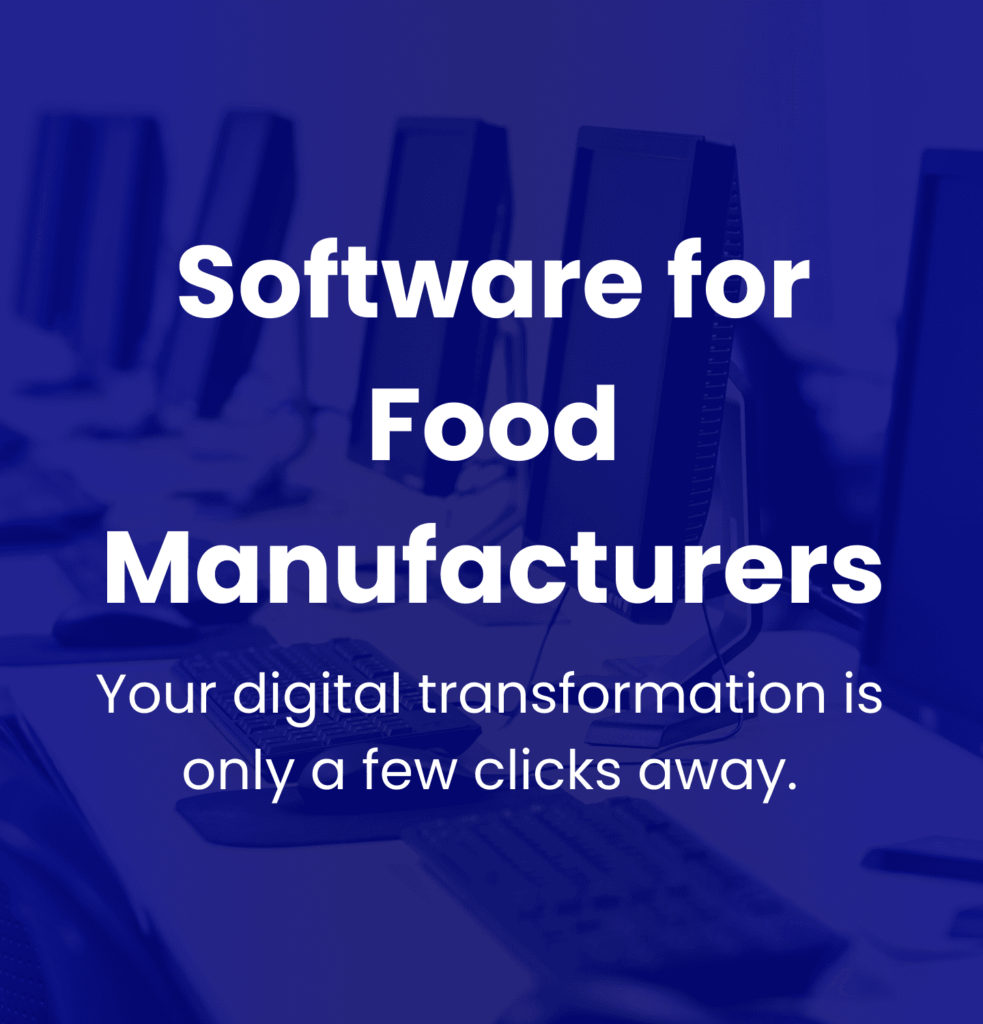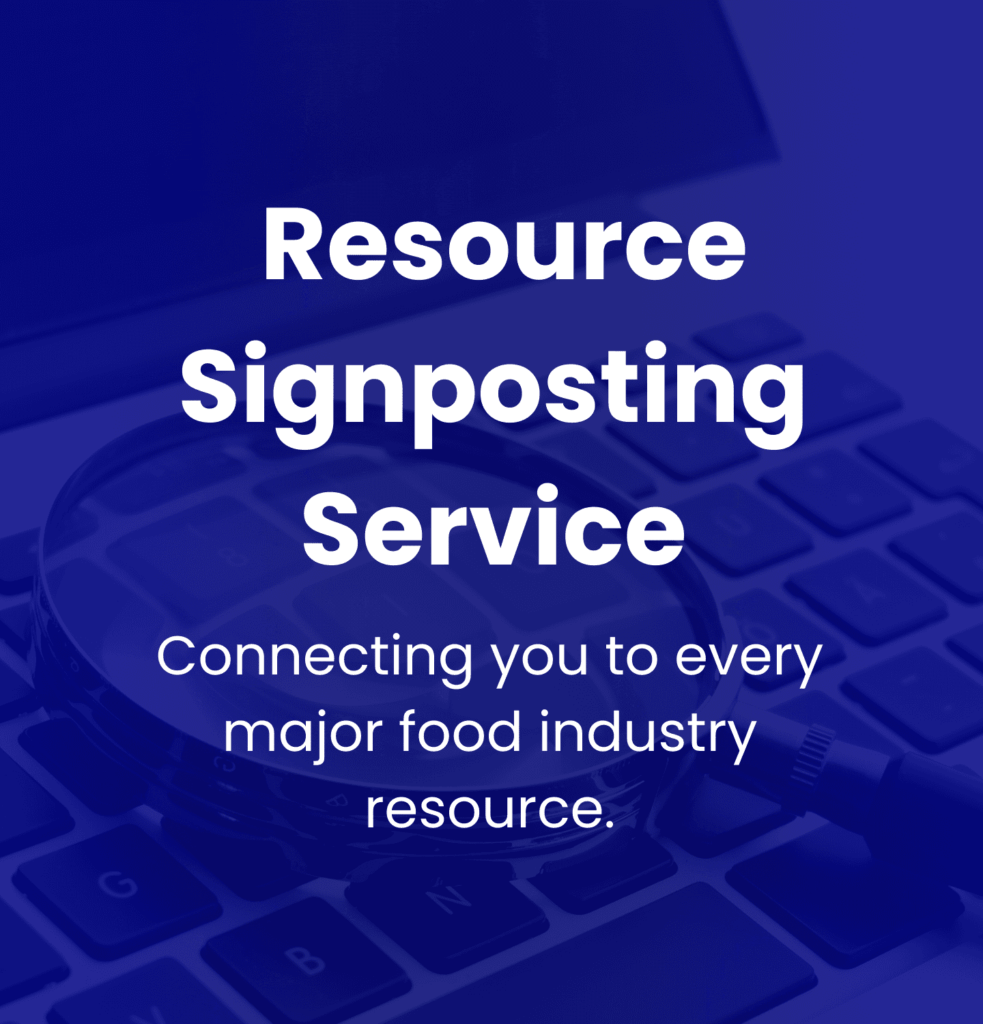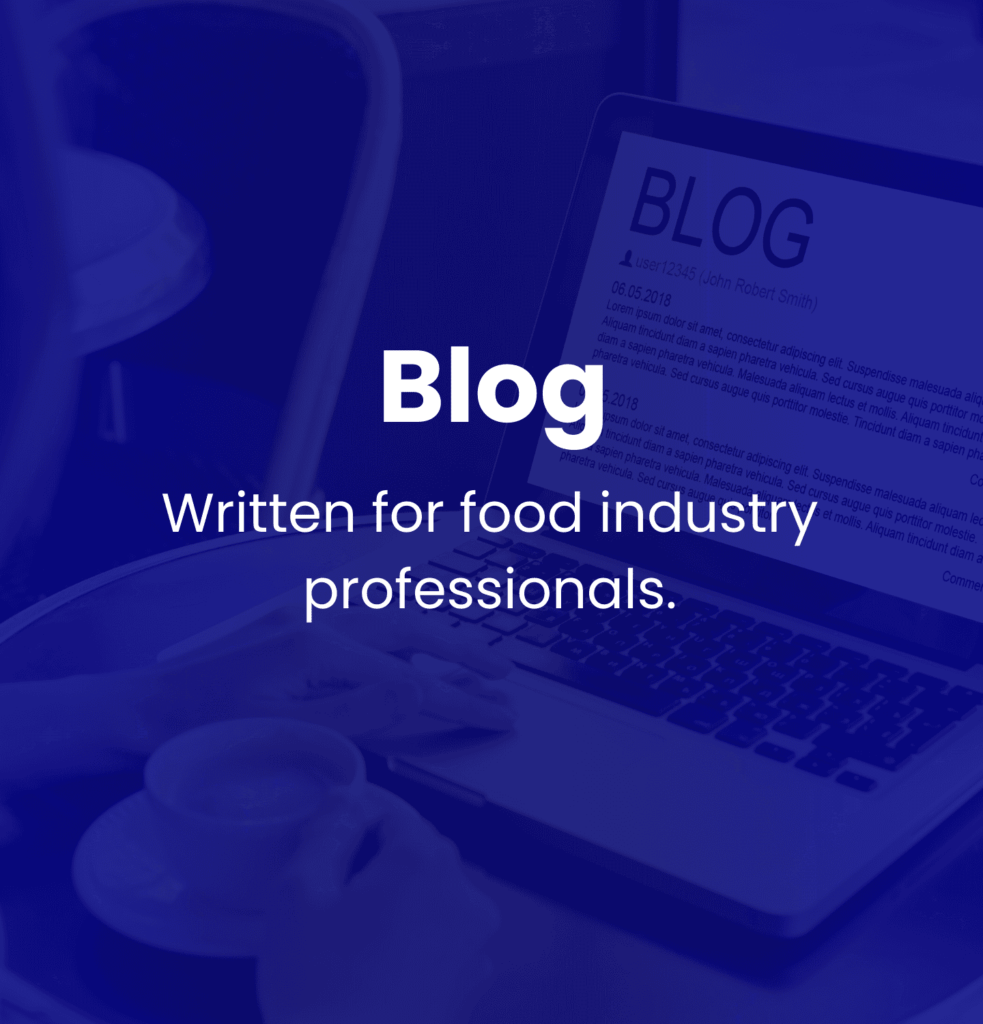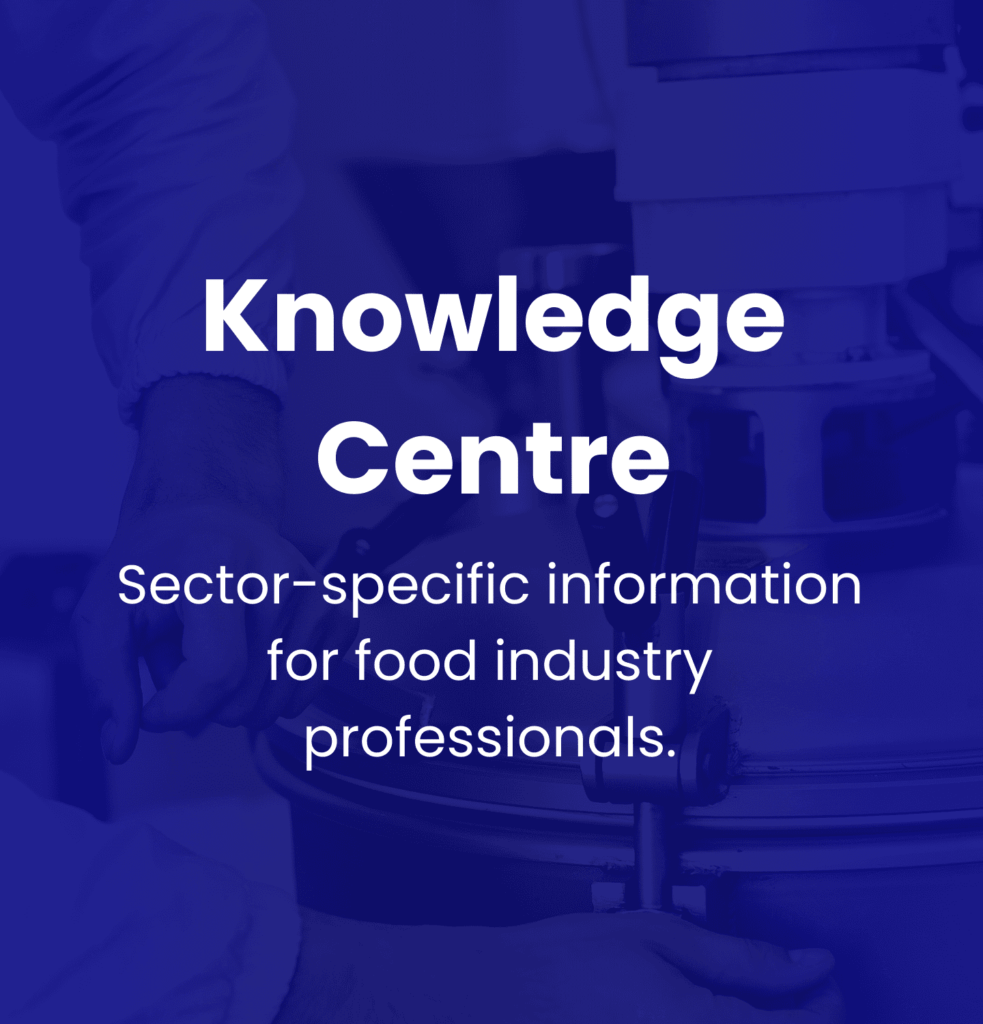Know: Annual Food Safety and Quality Review
Contents
Introduction
Key Takeaways
Understanding the Purpose of Annual Review Meetings
Planning and Structuring the Review Meeting
Reviewing and Reflecting on Previous Action Plans and Timeframes
Analysing Audit Results: Internal, Second-Party, and Third-Party Audits
Addressing Unresolved Objectives
Analysing Customer Complaints
Incident Management and the Handling of Non-Conforming Materials
Assessing the Effectiveness of the HACCP Plan
Evaluating Food Defense and Authenticity Measures
Cultivating a Culture of Food Safety and Quality
Assessing Resource Requirements
Conclusion
Introduction
In the field of food manufacturing, there’s no denying the importance of food safety and quality. These pivotal components help build vital consumer trust and ensure that industry regulatory standards are met. Rising awareness about food safety and transparency demands are pushing businesses to be more accountable than ever. Playing a significant role in this effort are annual food safety and quality review meetings, which offer a platform to scrutinise an organisation’s existing food safety management systems, strengthen current strategies, and pinpoint areas requiring improvement.
These annual food safety and quality review meetings are strategic convenings that allow stakeholders to evaluate the food safety management system (FSMS). The primary objective here is to scrutinise the efficacy of current practices and gauge their alignment with regulatory norms and customer expectations. Reviews usually examine previous action plans, audit results, and customer feedback, enabling a comprehensive assessment of compliance, operational efficiency, and product integrity.
In this article, we aim to shed light on various vital points forming the backbone of these review meetings. The subject matter will range from an exploration of audit results and customer complaint analysis to strategising response to non-conforming materials. It’s essential to underline the interconnected nature of these aspects; for instance, recommended operational changes could be directly influenced by customer feedback, helping maintain compliance. By adopting a holistic approach to food safety and quality, businesses can improve their processes while bolstering trust and consumer confidence in their products.
Key Takeaways
Annual food safety and quality review meetings are fundamental in upholding industry standards and assuring regulatory compliance within the food manufacturing sector. By assembling key stakeholders, these meetings facilitate thorough evaluations of Food Safety Management Systems (FSMS). As a result, organisations are able to gauge their effectiveness, pinpoint areas requiring improvement, and align their practices with changing regulatory frameworks.
Components and Processes
The core elements of these meetings involve a comprehensive review of audit results, including data from both internal and external audits. Such an evaluation provides clarity on compliance gaps and instils a broader understanding of required corrective actions. Examining customer complaints and incidents are integral parts of these meetings. It grants useful insights into operational deficiencies, allowing manufacturers to enhance their processes and avoid future instances of non-compliance. Handling non-conforming materials is just as important, as this assures product integrity and adheres to quality standards.
The HACCP Plan
A key part of these review meetings lies in the discussion surrounding the Hazard Analysis and Critical Control Points (HACCP) plan. This plan is considered essential for ensuring food safety. By systematically identifying and controlling potential hazards throughout the production process, the HACCP plan becomes an integral part of the organisation’s wider quality management practices. Successful execution of this plan does not only reduce risks but also encourages a comprehensive approach to managing safety concerns.
By means of regular assessments and strategic discussions during these annual meetings, food manufacturers can cultivate an environment of continuous improvement. This ensures that their food safety practices stay robust and adaptive to both consumer expectations and regulatory obligations. Adopting such a proactive strategy is vital for sustaining consumer trust and achieving operational excellence.
Food Industry Hub Management Systems can significantly boost the effectiveness of your food safety and quality management system, leading to improved confidence and elevated quality assurance throughout your operations.
Understanding the Purpose of Annual Review Meetings
Annual review meetings serve a significant role in the food manufacturing industry, notably in compliance and quality assurance enhancement. Such organised reviews guarantee that organisations adhere to an ongoing improvement path within their food safety and quality management systems. Concurrently, these meetings fulfill compliance obligations whilst enhancing operational efficiency.
Key Terms and Objectives
Food Safety encompasses the practices and systems instituted to hinder foodborne illnesses through secure food handling, preparation, and storage. Effective food safety management is essential in upholding public health and confidence in food products.
Quality Assurance is concentrated on retaining unvarying product quality via standardised processes and systems. This involves scrupulous monitoring and evaluation to ensure products adhere to pre-established quality measures.
Annual Meeting Objectives involve:
- Continuous Improvement: Identify potential enhancements in food safety and quality systems to strengthen overall performance.
- Compliance: Assure adherence to food safety regulations and schemes, including the Food Safety Modernization Act (FSMA) and ISO 22000. These standards articulate safety and operational principles
[Source: Food Safety]. - Operational Efficiency: Simplify processes to enhance reliability and efficiency in food production operations.
Purpose of Annual Review Meetings
One of the primary functions of these meetings is to Review Previous Action Plans and Timeframes. This incorporates analysing the effectiveness of past decisions and their application, identifying successes, and acknowledging areas needing improvement. Such discussions promote better alignment of future plans with organisational targets and realities [Source: Quality Assurance Magazine].
Another essential component is Audit Results. Examining outcomes from internal, second-party, and third-party audits enables organisations to comprehend compliance stages and effectively tackle any deficiencies.
Discussions also aim to address Unmet Objectives. Recognising objectives that were not accomplished, particularly those linked to compliance or quality improvement, provides a platform for generating strategies to surpass hurdles in future implementations.
Customer Complaints and Incidents are another focal point; addressing customer feedback is essential when determining corrective actions necessary to improve food safety and quality.
The Handling of Non-Conforming Materials and Corrective Actions is also discussed to ensure adequate measures are in place to manage quality-related issues and to assess the effectiveness of applied corrective actions.
Assessing the Effectiveness of the HACCP Plan is an essential part of these meetings. This involves reviewing the system’s performance in identifying and controlling potential hazards in food production process.
There’s also a necessity to examine Food Defence and Authenticity actions, this ensures that the food supply’s integrity is maintained against intentional contamination, and validates product authenticity.
Lastly, review meetings address Resource Requirements to discuss any additional resources needed for continuous improvement and compliance efforts, ensuring the organisation is suitably equipped to fulfill safety and quality standards.
Structured review meetings are more than mere compliance checkpoints; they are integral to proactive management, enabling organisations to identify potential issues before they escalate and fostering a culture of transparency and involvement in food safety and quality improvement initiatives.
Planning and Structuring the Review Meeting
Effective planning of annual food safety and quality review meetings is pivotal for comprehensive reviews and actionable outcomes. The first step is gathering important data, which includes results from internal, second-party, and third-party audits. It’s essential to compile customer complaints, incidents, non-conforming materials, and any corrective actions taken. Moreover, evaluating the effectiveness of previous action plans and the HACCP plan provides a robust foundation for future discussions. Recording this data accurately supports strategic decisions and assesses the current state of compliance and quality within the organisation.
Steps Involved in Planning Review Meetings
The step following data collection is setting a detailed and transparent agenda. This agenda should highlight key discussion areas such as audit outcomes, action plans, and customer feedback. Assigning specific time slots for each item ensures the meeting remains focused and productive, leading to comprehensive engagement with each topic [Source: Modern Meeting Standard]. Distributing the agenda prior to the meeting allows participants to prepare significant contributions.
Involving key personnel from different departments is a significant factor for aligning stakeholders. This approach ensures that the meeting encompasses perspectives from different domains within the organisation, thereby promoting a collaborative atmosphere and increasing accountability during discussions about complaints and non-conformities.
Tactics for Conducting Productive Analysis of Audits
To maximise the analysis of internal, second-party, and third-party audits during the meeting, systematic evaluation of individual audit findings is recommended. Begin with a summary of key outcomes, focusing on strengths and identifying any instances of non-compliance. A collaboration with different departments can yield insights leading to a holistic understanding of issues identified and potential corrective actions.
Recognising trends can help identify recurring issues. Careful scrutiny of patterns in audit results enables teams to devise a structured approach to persistent problems. Corrective actions should be prioritised based on the severity and frequency of the issues uncovered, ensuring that resources are effectively allocated. Assigning clear responsibilities and deadlines for these actions enhances accountability and promotes a culture of continuous improvement.
Best Practices for Managing Discussions on Customer Complaints
A data-driven approach should be adopted when discussing customer complaints. Start by sharing data on complaint trends and resolutions, collectively examining the success of responses to customer feedback. Establishing a structured system for addressing complaints ensures that each issue is methodically reviewed and allocated necessary resolution resources.
In addition, creating a collaborative environment encourages stakeholder participation in finding solutions. Encouraging input and suggestions from team members not only leads to innovative solutions but also strengthens commitment towards customer satisfaction initiatives.
Addressing non-conforming materials requires having clear protocols for identification and resolution. A thorough root cause analysis is effective in uncovering the factors leading to non-conformance. Developing and documenting corrective action plans based on these findings is necessary for preventing reoccurrences. Regular monitoring of the effectiveness of these actions during subsequent meetings will assist in establishing a proactive quality assurance culture throughout the organisation.
Sign-up for the Food Industry Hub Mail Service
We regularly produce new content for food industry professionals, and the Food Industry Hub Mail Service is the best way to stay up to date with the latest additions.
Signup today to be added to the Food Industry Hub mailing list.
Reviewing and Reflecting on Previous Action Plans and Timeframes
Regulatory Requirements and Guidelines for Review Frequencies
In the food industry, abiding by regulatory standards is essential. Organisations like BRCGS and SQF highlight the need for annual reviews of food safety and quality systems. The BRCGS Food Safety Issue 9 requires an annual review, not just as a suggestion but as a mandate to evaluate the efficacy of the food safety and quality culture plan. Similarly, SQF compliance demands annual reviews and monthly updates to senior management. Unpredicted reviews can be precipitated by marked changes such as serious non-conformities, customer grievances or incidents that put food safety or quality at risk, emphasising the requirement for an adaptable review system to promptly address pressing discrepancies.
Stressing the Importance of Accountability
Responsibility plays a central role in food safety management systems to guarantee that actions are executed within specified timelines. It is necessary for top management to take an active part in the process of review and monitoring. This encompasses assigning roles and responsibilities to all team members, ensuring that each person is apprised of their specific roles in maintaining an effective food safety management system. Cultivating clear accountability stimulates task ownership and leads to a more exhaustive execution of action plans. Moreover, performance metrics should be embedded into the accountability framework, facilitating regular checks of progress against defined objectives.
Review and Reflection on Previous Outcomes to Inform Future Action Plans
The practice of looking back at past action plans is a key factor in determining future tactics. A detailed analysis of final results allows for the identification of areas that need enhancement. During this evaluation, it is important to consider:
- Audit Results: Reviewing outcomes from internal, second-party, and third-party audits is aiding in pinpointing non-conformities and areas needing growth.
- Unfulfilled Goals: Understanding the root causes behind unfulfilled objectives can guide the modification of future plans, making them more achievable and practical.
- Customer Complaints: A study of customer feedback can unveil systematic problems that require attention to elevate product quality.
- Incident Assessment: An in-depth investigation of incidents regarding non-adhering materials, along with the efficacy of corrective actions, can strengthen the organisation’s reaction strategies.
- HACCP Effectiveness: Periodic reviews should enclose an evaluation of the Hazard Analysis and Critical Control Points (HACCP) plan to ensure its ability in circumventing prospective hazards.
- Food Defence Measures: Appraisement of the efficacy of food defence and authenticity measures markedly contributes to overall product safety.
This reflection forges a feedback cycle that allows organisations to optimise resources, fine-tune strategies, and boost their food safety and quality performance. Regular enhancement through these evaluations is crucial for keeping pace with changing industry requirements and enduring regulatory compliance.
Analysing Audit Results: Internal, Second-Party, and Third-Party Audits
Internal audits, second-party audits, and third-party audits play a distinct role in ensuring adherence to food safety and quality standards. Analysing the outcomes of these audits offers valuable insights, enabling organisations to maintain robust quality assurance practices.
Identifying the Frequency and Methodology for Conducting Internal Audits
Internal audits function as a feedback system, ensuring adherence to an organisation’s policies and procedures while maintaining compliance with food safety and quality standards. These audits typically occur on at least four occasions over the course of a year, especially in organisations adhering to BRCGS standards. High-risk areas or those with a track record of non-compliance often necessitate more frequent audits.
The approach to conducting these audits consists of detailed examinations of processes against established procedures. They typically begin with an opening meeting with management, moving on to systematic observations of operations, and concluding with a closing meeting where findings are shared, and corrective steps discussed. This structured approach ensures issues are quickly identified and addressed.
Overview of Remote Audits
Faced with drastic changes in the food safety inspection landscape, the some schemes have incorporated remote audits. Remote audits focus on verifying compliance with food safety standards while offering flexibility and cost reduction. Using video-conferencing technology and digital document reviews, auditors assess processes without needing on-site visits. This method proved particularly impactful for maintaining compliance during events that cause disruptions, such as the COVID-19 pandemic [Source: Smithers].
Remote audits achieve similar outcomes to traditional audits, identifying areas for improvement and contributing to an ongoing improvement in food safety practices. They help organisations uphold standards and boost quality assurance efforts [Source: AIB International].
Discussion on the Objectives and Key Findings of Third-Party Audits and Their Significance for Quality Assurance
Third-party audits engage independent bodies for the verification of compliance with industry standards, serving as significant tools for quality assurance. The primary aims include providing a credible assessment of a company’s adherence to safety and quality protocols, and verifying industry-standard conformity for certifications such as ISO 9001 or BRCGS.
Third-party audits often reveal areas of non-compliance, providing key insights into quality management system effectiveness. These audits validate internal efforts, enhance stakeholder trust by demonstrating dedication to high standards, and identify systemic issues, offering the opportunity to implement corrective measures effectively.
Integrating the results of these audits into an organisation’s annual food safety and quality review meetings allows for a comprehensive analysis of compliance statuses, prior action plans, customer feedback, and resource allocation strategies. This enhances an organisation’s capability to anticipate and respond to potential challenges, thereby solidifying its commitment to food safety standards.
Addressing Unresolved Objectives
Apprehending Challenges: Cultural and Technical Barriers
When considering yearly food safety and quality reviews, a variety of obstacles can inhibit the attainment of objectives, particularly cultural and technical barriers.
Cultural obstacles often originate from a lack of engagement or comprehension among staff regarding food safety and quality principles. It’s necessary to ensure that all employees align with the objectives of the organisation; achieving this requires effective communication strategies. Approaches may include incorporating food safety standards into job descriptions, facilitating continuous learning opportunities, and routinely reminding staff about the objectives and their significance within daily operations [Source: FSSC].
Conversely, technical barriers can emerge due to insufficient resources, outdated methods or lacking technology. Tackling these issues requires an exhaustive evaluation of existing systems and pointed investments in enhancements that support Food Safety Management Systems (FSMS). This might involve technology upgrades or amending standard procedures to introduce more effective practices [Source: Food Safety Magazine].
Implementing SMART Criteria for Objective Setting
Implementing the SMART criteria—Specific, Measurable, Achievable, Relevant, and Time-bound—is pivotal for constructing high-quality objectives in food safety and quality management.
- Specific: Objectives are precisely defined to avert ambiguity.
- Measurable: Trackable indicators are established to effectively monitor progress.
- Achievable: Objectives are practical in light of available resources.
- Relevant: Goals are aligned with the broader vision and safety culture of the organisation.
- Time-bound: Definitive deadlines are provided for objective achievement, thus ensuring accountability.
For instance, an effective SMART objective could be: “Reduce food safety incidents by 30% over the next year by enhancing employee training and upgrading audit follow-ups.” This objective clearly outlines a target and also links operational initiatives with wider regulatory compliance and quality assurance goals.
Approaches for Managing Resource-related Challenges
Constraints linked to resources often affect the successful execution of objectives. To alleviate these issues, organisations can adopt the following strategies:
- Resource Allocation: Prioritise the distribution of resources based on the defined SMART objectives. Ensure that activities related to food safety receive essential support.
- Improving Efficiency: Incorporate process enhancements to fully utilise current resources. This may include simplifying audit procedures or adopting technology for more efficient data collection and handling.
- External Assistance: Indeed, there will be situations wherein external partners or consultants may be required to overcome specific technical or resource barriers without straining internal capacities. This method can supply additional expertise and fresh viewpoints on resolving challenges.
By concentrating on these aspects, organisations can effectively tackle unresolved objectives, ensuring that both cultural and technical challenges are successfully navigated, thus allowing the continual enhancement of the environment in food safety and quality management.
Analysing Customer Complaints
Analysing customer complaints is significant for sustaining and enhancing food safety and quality in food manufacturing. It is achieved by integrating customer feedback, using trend analysis, and understanding the variance in global complaints to significantly bolster food safety strategies.
Integrating Customer Feedback into HACCP Updates
Customer complaints provide valuable insight into potential hazards in the food manufacturing process. Sorting these complaints by hazard type—such as microbiological, chemical, physical, and allergenic — enables manufacturers to evaluate whether these issues are adequately included in the HACCP plan. Any complaint that demonstrates an unexamined hazard should be recorded and melded into the HACCP plan along with a related risk appraisal. This forward-thinking method aids in handling potential risks efficiently.
Regularly reviewing customer complaints—preferably quarterly—enables food manufacturers to cross-reference them with existing hazard evaluations, thereby keeping food safety compliance current. This ongoing practice contributes to overall quality assurance and risk management.
Role of Trend Analysis
The use of trend analysis helps manufacturers to identify common complaint patterns, aiding the detection of recurring issues such as contamination or quality defects. This knowledge informs strategic enhancements in food safety procedures [Source: Food Safety Magazine].
Identifying trends also allows organisations to predict potential impacts on food safety. Examination of historical complaint data enables companies to anticipate risk violations and mitigate them before they evolve into serious issues. Important metrics for trend analysis may include hazard category, risk level, seasonal data, and supplier performance—each contribute to identifying systemic issues needing corrective actions.
Understanding Global Complaint Variance
Complaint patterns can greatly vary across different markets, influenced by cultural, regulatory, and environmental factors. The understanding of these variations proves necessary for adapting and refining food safety strategies at a global level. Such adaptations are often needed to ensure adherence with global food safety standards, such as BRC and SQF, which insist on active management approach to address risks across different markets [Source: Klipspringer].
Besides regulatory compliance, it’s also necessary to consider local preferences and cultural insights. Adjusting production and quality control processes to meet specific regional requirements can decrease complaints and enhance product acceptance.
Integration into Annual Review Meetings
Incorporating customer complaint data into annual review meetings is essential for evaluating the effectiveness of the HACCP plan and for identifying areas needing improvement. Sharing findings from trend analyses showcases successes and challenges while enabling continued progress in food safety and quality. Additionally, discussing how global complaint variance influences operational strategies ensures consistent practices across markets, thus enhancing compliance and customer satisfaction.
Incident Management and the Handling of Non-Conforming Materials
The efficient handling of incidents related to non-conforming materials in food manufacturing relies heavily on well-devised containment protocols. The primary aim of these protocols is to prevent the inadvertent release of these materials into the production line, thereby ensuring food safety and quality. A prominent strategy is the secured housing of non-conforming items. These items ought to be isolated in distinctly marked zones within the manufacturing facility. The use of tools, such as barcode tracking systems, can further augment this physical separation for precise identification and management of these items.
Besides secure storage, training of employees to spot and promptly report non-conforming products plays an important role. It is essential for staff to be well-versed with the established procedures for managing these materials; this encourages active participation in quality assurance protocols.
Differentiating Between Short- and Long-Term Corrective Actions
Correction measures should address both immediate concerns and underlying causes for maximum efficacy. Short-term corrective actions serve as quick remedies to reduce the risks posed by non-conforming materials. Examples of such swift fixes may include temporary alterations in production processes or reworking defective products to ensure uninterrupted operations.
On the other hand, long-term corrective actions aim to tackle the primary causes of these non-conformities. This usually entails more comprehensive changes, such as improving quality control measures, updating machinery, or revising operational procedures to prevent a recurrence. Through the implementation of both short- and long-term corrective actions, food manufacturers can balance immediate requirements with strategies leading to enduring advancements in quality and safety [Source: EPA].
Importance of Establishing Validation Gates
Validation gates provide an effective means of evaluating the success of corrective actions taken in response to non-conforming materials. The establishment of these gates involves routine checks post the implementation of changes to ensure that the corrective measures have achieved their targeted goals. Regular monitoring allows verification that operational amendments have not unintentionally introduced new risks, thus sustaining compliance with food safety regulations and assurance schemes.
Integrating a structured validation protocol encourages an ethos of ongoing enhancement, enabling food manufacturers to adapt their strategies according to accumulated data. This continual feedback mechanism is instrumental in improving processes and elevating total quality management performance.
Application of these concentrated strategies in annual food safety and quality review meetings can significantly bolster their incident management and handling of non-conforming materials. This ultimately results in elevated product safety and quality assurance across all aspects of production.
Assessing the Effectiveness of the HACCP Plan
Hazard Analysis and Critical Control Points (HACCP) plans are kept on track and bolstered through validation and verification processes, metrics for evaluating employee competency, and the introduction of technology to enhance efficiency and attention to detail.
Understanding HACCP’s Verification and Validation Processes
Verification and validation form the backbone of ensuring a HACCP plan’s effectiveness. Verification ensures the plan’s correct implementation and consistent functionality. Examples of verification strategies might involve inspecting monitoring records for precision, initiating internal or external audits, and confirming the accuracy of monitoring equipment. In contrast, validation checks for the plan’s scientific legitimacy and its efficacy in controlling identified hazards. This is usually achieved through thorough scientific evaluation and constant review, particularly when modifications happen in processes [Source: Pork Gateway].
Metrics for Evaluating Employee Competency
Measuring employee competency is a sine qua non component of a successful HACCP plan. Key performance indicators could be training participation rates, which indicate how many employees have received HACCP training. Constant knowledge assessments, like quizzes or practical evaluations, can measure employees’ understanding of HACCP principles. Observation of employees executing tasks connected with HACCP protocols can provide necessary insight into daily adherence to established guidelines [Source: Food Protection]. It is also beneficial to note incident response times and effectiveness, as this showcases how employees apply their training when handling deviations or non-conformances in real-time situations.
Implementing Technology to Improve HACCP’s Effectiveness and Monitoring Protocols
Integrating technology can contribute significantly to enhancing a HACCP plan’s effectiveness. For instance, automated monitoring systems equipped with sensors can track factors like temperature and humidity in real-time, reducing potential human error. Digitising record-keeping assures that records are reliably maintained and readily accessible, thus reducing the chances of lost data. Utilising data analytics can offer insights into trends and patterns, enabling proactive management of potential hazards. Such digital solutions can simplify the HACCP management process and facilitate tracking of corrective actions and audit results.
Understanding HACCP Codices
HACCP codices are global guidelines crafted with the aim of boosting food safety compliance. Institutions like the Codex Alimentarius Commission advocate a systematic approach towards identifying and controlling hazards in food production. Such important elements of these guidelines encompass the establishment of a risk-based approach to hazard identification, instituting preventive controls targeting the elimination or mitigation of hazards, and setting up critical control points (CCPs). Continuous verification and validation are essential in ensuring these codes’ adherence. This empowers food manufacturers to uphold high safety standards and adapt effectively to changes in regulations.
Including these principles in annual review discussions on food safety and quality allows for all-encompassing coverage of key topics. A thorough examination of action plans, an analytical look at audit results, and an assessment of employee competencies ensures that the HACCP plan stays robust and adapts to meet the emerging challenges in food safety. This methodical approach cultivates an ethos of continuous improvement and compliance throughout the entirety of an organisation.
Evaluating Food Defense and Authenticity Measures
Securing the integrity and safety of food supply chains requires an evaluation of food defense and authenticity measures. This section will shed light on key areas such as fraud vulnerability scoring, the influence of detection technology and the implications of food safety and quality culture.
Understanding and Managing Fraud Vulnerability Scoring in Food Supply Chains
Fraud vulnerability scoring employs a systematic approach in assessing the risk of food fraud throughout supply chains. This protocol necessitates the evaluation of various contributing factors including ingredient sourcing, the complexity of the supply chain and the reliability of suppliers. Vulnerability assessments draw from historical data on fraud incidents as well as geographical considerations in order to gauge the risks tied to different materials and supply pathways [Source: FSNS].
To manage these risks, strategies like supplier audits, enhancements in traceability systems, and routine testing of high-risk ingredients for authenticity are implemented. Such controls safeguard the supply chain and support compliance with GFSI-benchmarked certifications like SQF and BRCGS, which demand robust food fraud prevention measures.
The Role of Detection Technology in Enhancing Food Safety Assurance Measures
Detection technology supports food safety assurance by allowing for product authenticity verification and the identification of potential contaminants. Advanced techniques, including DNA testing and spectroscopy, yield valuable information about product composition, empowering manufacturers to effectively identify foreign substances. For example, the use of rapid testing procedures can counter the sale of misbranded products, thus strengthening consumer trust and compliance [Source: Taylor & Francis].
Moreover, innovative packaging solutions such as tamper-evident and smart packaging provide extra security layers to prevent fraudulent attempts.
Food Safety and Quality Culture
The Food Safety Culture vitalises the cultural aspects of food safety within organisations. It promotes the establishment of an anticipatory food safety culture that emphasises the prevention of food fraud and boosts product authenticity. It stands in support of companies’ obligation to conduct documented vulnerability assessments for raw materials to ensure the mitigation of any potential adulteration risks [Source: NCBI].
To internalise this cultural shift, manufacturers should deliver comprehensive training for employees, regularly conduct audits, and nurture an environment where compliance and integrity are at the forefront. Meeting these requirements aids regulatory conformity, enhances accountability across the supply chain, and boosts consumer confidence and brand integrity [Source: Food Safety Magazine].
In annual review meetings, focusing discussions on these areas helps organisations shape practical strategies for strengthening food defense and authenticity measures, thereby bolstering the overall safety and quality assurance processes.
Cultivating a Culture of Food Safety and Quality
Encouraging Senior Management to Drive a Positive and Effective Food Safety Culture
The active participation of senior management is fundamental in nurturing a robust food safety culture. Main strategies involve the setting of explicit objectives and priorities to ensure everyone’s clarity in their roles related to food safety. Management must also illustrate their dedication by allocating essential resources and cultivating widespread involvement throughout the organisation. Through regular audits and performance measurements, inconsistencies in practices that require attention can be identified. Honesty in communication regarding safety objectives, achievements, and obstacles is integral to cultivating a shared sense of responsibility across all levels. Promotion of a safety-centric ethos by leaders themselves encourages others to match their actions and consider food safety in their daily operations.
Formulating Metrics for Interdepartmental Teamwork and Responsibility
To reinforce a food safety culture, creating effective metrics for gauging interdepartmental cooperation and accountability is important. Objective Key Performance Indicators (KPIs), like compliance rates with safety procedures, attendance at training sessions, and how customer complaints are resolved, offer tangible data for evaluation. Qualitative assessments, on the other hand, can explore employee attitudes and habits concerning food safety through surveys and interviews. This combined approach allows organisations to gain a comprehensive understanding of both performance and the overarching atmosphere surrounding safety practices within the company. Furthermore, collaboration indicators can monitor involvement in interdisciplinary meetings and shared projects, thus gauging levels of departmental cooperation.
Instituting Whistleblower Systems for Voicing Safety or Quality Concerns
Installing whistleblower systems is a core component for detecting and promptly addressing safety or quality concerns. Efficient systems comprise creating confidential and anonymous reporting methods like hotlines or secure online forms, which embolden employees to report concerns, without fear of retaliation. It’s essential to devise a response policy that enforces swift investigations into all reports, with the outcomes being communicated transparently to the individual who reported the issue. This approach not only builds trust in the reporting system but also strengthens the importance of maintaining high safety standards within the organisation. Ongoing training and awareness campaigns solidify everyone’s role in promoting food safety and motivate a proactive stance towards identifying potential risks, thereby fine-tuning the overall safety culture.
Incorporation of these strategies into annual food safety and quality review meetings will bolster transparency and accountability, ensuring continuous refinement in practices and alignment with organisational objectives.
Assessing Resource Requirements
Being conversant with the financial aspects of food safety compliance is key for successful strategic planning, particularly during annual review meetings. The associated costs of constructing a food safety plan can greatly differ, oscillating between approximately $6,000 to $87,000, contingent on whether the scheme is devised in-house or through external consultancy [Source: Food Industry Executive].
Evaluating Return on Investment
Examining the return on investment (ROI) for technology investments in food safety measures is important. Digital food safety management systems can boost operational efficiency and provide better visibility of compliance. Organisations can utilise tools like ROI calculators to establish the business value of adopting such technologies. Case studies have shown that companies integrating digital solutions often experience better compliance and resource utilisation, as technology enables real-time error correction and a positive shift in company culture.
Staffing Ratio for Supervision
Decision-making regarding appropriate staffing ratio for effective supervision in food safety processes requires the careful consideration of various factors. These include production volume, product complexity, and regulatory responsibilities. While there isn’t a universally applicable staffing ratio specific for food safety supervision, a strategic mix of well-trained personnel and suitable technology is key for maintaining compliance. Regular employee training enhances workforce proficiency, which is essential in maintaining high food safety standards. In addition, finding the right balance between staffing costs and operational efficiency is important for maintaining a robust and responsive food safety framework.
At annual review meetings, the focus should be put on aligning previous action plans and their outcomes. This includes addressing any unmet objectives that have been highlighted during audits or customer complaints, while considering resource allocation for personnel, technology, and infrastructure necessary for effective implementation of food safety and quality.
Conclusion
Annual food safety and quality review meetings are integral to sustaining operational excellence in the food manufacturing industry. These gatherings allow the upper management to gauge the efficacy of food safety and quality management systems, identify improvement areas, and ensure persistent compliance with fluctuating regulatory demands and consumer expectations.
Reflecting upon the salient points and strategic approaches deliberated in these meetings, various elements demand attention. The management review process entails assessing the suitability, adequacy, and effectiveness of the Food Safety Management System (FSMS). This necessitates an exhaustive review of earlier action plans, internal audits, third-party audits, corrective measures, and customer feedback.
Key Components and Strategic Approaches
Essential components such as evaluating past initiatives’ success help in identifying gaps and planning for future enhancements. Analysing audit outcomes from different sources provides beneficial insights into compliance and operational efficacy. Additionally, pinpointing areas where objectives haven’t been met ensures timely implementation of corrective measures. Review of customer complaints and incidents play a key role in understanding consumer satisfaction and possible risks [Source: EFSA]. Grasping non-conformities in materials and corrective actions is necessary for preserving product integrity, while evaluating the effectiveness of the HACCP plan ensures adequate hazard controls.
In terms of strategic review approaches, participation from all stakeholders in the review process encourages a culture of responsibility and progress. Proper documentation and tracking of actions are necessary for accountability and progress measurement. Use of S.M.A.R.T. objectives enhances the effectiveness of the review process as they ensure the goals are specific, measurable, achievable, relevant, and time-bound.
The Future of Safety Meetings
Moving forward, it’s important to integrate innovative strategies by adapting to new technologies and methodologies that amplify food safety and quality management systems. Regular evaluation is key and holding review meetings more frequently than annually may become necessary, especially during significant operational changes or new product introductions. Improving Corrective and Preventive Action (CAPA) programmes through comprehensive outcome analysis assures on-time completion of actions. Regular reviewing of training effectiveness and employee feedback assists in aligning staff behaviour with safety goals.
About The Food Industry Hub Knowledge Centre
The Food Industry Hub knowledge centre delivers informative content on a variety of topics pertinent to the food manufacturing industry.
You can return to all topics by clicking here.
From The Food Industry Hub Blog
Expanding on this topic with related content from our blog.

